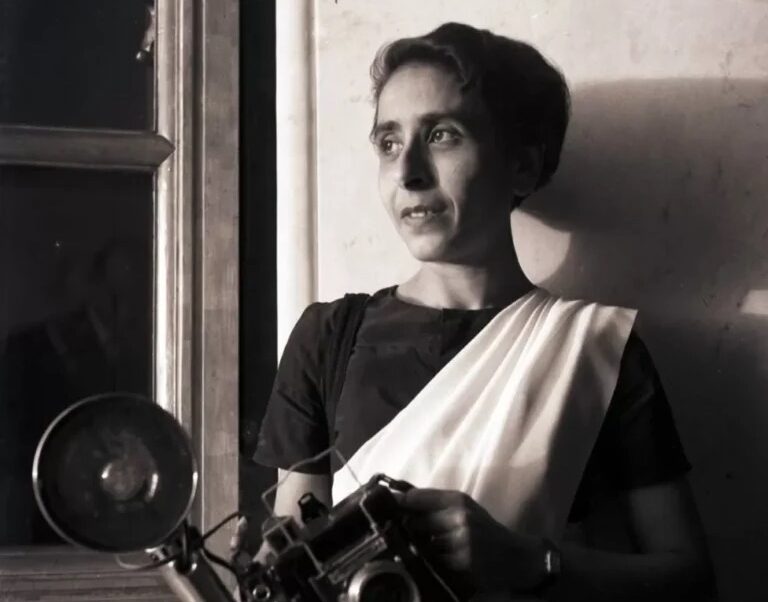
Early Life
Born on December 9, 1913, in the western Indian state of Gujarat, Homai Vyarawalla’s early years were marked by constant motion. Since Vyarawalla’s father was an actor in a traveling theater group, she had a nomadic childhood until the family settled in Mumbai (then Bombay). There, she pursued her education at the renowned JJ School of Art. It was during her college years that she crossed paths with Manekshaw Vyarawalla, a freelance photographer who would become her husband. Through him, she discovered her passion for photography, setting the stage for her remarkable career.
Her Journey Through the Lens
Gaining prominence with her captivating snapshots of Mumbai life, Homai Vyarawalla’s lens caught the eye of readers when her work was featured in The Illustrated Weekly of India magazine. Accordingly, Vyarawalla was breaking barriers as she became one of India’s pioneering female contributors to mainstream publications. Homai Vyarawalla skillfully documented the bustling rhythms and vibrant tapestry of daily existence in the city through her evocative imagery.
Initially, her photos were published under her husband’s name before she adopted her pseudonym “Dalda 13”. Vyarawalla seized upon the undervaluation that women encountered as journalists and created captivating and unrestricted photographs. According to Vyarawalla, the lack of respect given to women in the journalism industry allowed her to freely capture candid, high-quality images of her subjects.
The Vyarawallas relocated to Delhi in 1942 when they became the photographers for the British Information Service. Homai Vyarawalla was among the scarce female photojournalists in Delhi during that era. Sources describe how she became a familiar sight, traversing the capital on her bicycle with her camera securely fastened to her back.
Capturing History: India’s Independence Era
Homai Vyarawalla’s lens captured pivotal political figures and significant events during India’s quest for independence, rapidly garnering her national recognition. Her portfolio ranged from candid snapshots of Jawaharlal Nehru, her preferred subject, to poignant portraits of Mahatma Gandhi. She also recorded images of Indira Gandhi, India’s inaugural female Prime Minister.
In addition to her extensive coverage of political figures, her repertoire comprises intimate, close-up portraits. This also included notable personalities who visited India in the post-independence era like Queen Elizabeth II and John F. Kennedy. Among them were also very prominent figures like China’s inaugural prime minister, Zhou Enlai, and Vietnamese leader Ho Chi Minh.
Exhibitions and Awards
Homai Vyarawalla’s remarkable photographic legacy finds a permanent home in The Alkazi Foundation for the Arts, situated in Delhi. A retrospective exhibition was jointly organized by the foundation and the National Gallery of Modern Art, Mumbai (NGMA) in 2010. Her extraordinary achievements were further honored when she was conferred with the Padma Vibhushan, India’s second-highest civilian award, in 2011.
Through her lens, Homai Vyarawalla captured pivotal moments of India’s struggle for independence and its subsequent transformation into a sovereign nation. Vyarawalla’s photography not only documented historical events but also provided a unique perspective on the social and cultural fabric of India during that time. Her pioneering spirit and determination were breaking barriers and paving the way for women in a male-dominated industry.
